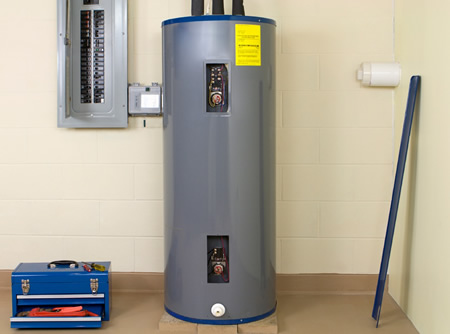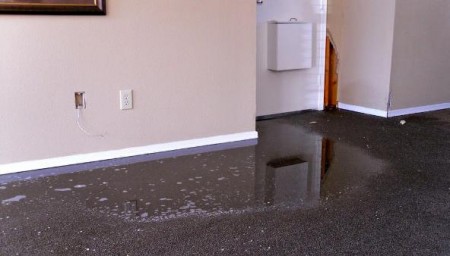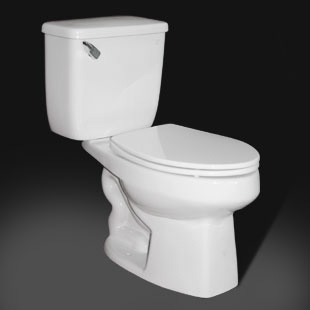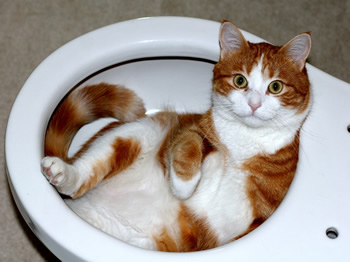Water Heater Sizing Guide

When a water heater is properly sized to a home, it will be more efficient and will meet the family’s needs better. A tank that’s too big will end up being a waste of energy, while one that is too small will run out of hot water too fast.
The most important aspect to consider when choosing a water heater with a tank is the home’s first hour rating. This measures how much hot water the water heater will deliver during a busy hour. This rating can be found on the water heater’s yellow EnergyGuide label.
Homeowners can figure out what FHR they will need by using a simple formula. For every person in the household, 12 gallons is needed. To figure out the maximum occupancy, add one more to the number of bedrooms present in the home. Then multiple that number by 12. That will give homeowners the minimum FHR they will need.
Tankless water heaters are rated by the maximum temperature rise possible at a given flow rate. Homeowners will need to determine the flow rate and temperature rise needed in the home. They can do this by listing all hot water devices they can expect to use at a single time. Then simply add up these flow rates to get the desired flow rate the tankless water heater will need.
To figure out the temperature rise, the incoming water temperature needs to be subtracted from the desired output temperature. This can vary depending on the type of appliances in the home that use hot water.
If you would rather not try to figure out all of this on your own, call All Star Plumbing and Restoration for help. After finding the right size, we can install the water heater and fix it if any problems arise. Learn more about water heaters and what problems they can develop on the All Star Plumbing and Restoration website.
Importance of Drying Out Water Damage

Water damage can be extremely costly for homeowners, especially if it isn’t dried out correctly or fast enough. The first 24 to 48 hours are critical in water damage dry out, which is why those affected should call All Star Plumbing and Restoration as soon as flooding or water damage is noticed.
Simply grabbing a wet-vac and opening some windows may not get the job done properly. Water can get down under flooring and inside walls and may go unnoticed until mold sprouts later on. Other issues that can pop up after a poor water damage dry out are:
- Warped flooring
- Swelling sheet rock
- Corroded wiring
The team at All Star Plumbing and Restoration has the knowledge and proper equipment to analyze the situation, create a dry out plan, and execute it so that no water remains. Throughout the drying process, moisture readings will be taken, even in hidden areas, to make sure as much water is extracted as possible before beginning restoration.
While some belongings might not be salvageable, with a fast water damage response, some can be saved in the dry-out process. The belongings that can’t be recovered will be removed and disposed of by All Star Plumbing and Restoration.
The faster homeowners call about water damage and flooding, the better the outcome of the dry out process will be. There’s less of a chance for mold to grow now and later, less permanent structure damage, and less cost for the homeowners.
Features to Avoid When Toilet Shopping
 Toilets are getting fancier all the time. They have all sorts of bells and whistles, some of which are good, and some are bad. Here are five features that should be rethought before purchasing:
Toilets are getting fancier all the time. They have all sorts of bells and whistles, some of which are good, and some are bad. Here are five features that should be rethought before purchasing:
1. Non-Standard Toilets
Having a unique toilet can be a conversation starter, but it can also be a drain on the wallet. Toilet parts wear out, and trying to find a non-standard part can be challenging. Once found, it can be pricey to get a replacement.
2. Colored Toilets
Color trends come and go. A fun-colored toilet that’s trendy now probably won’t be in 20 years when the house is up for sale. It can make the home hard to sell without replacing it for a standard white porcelain throne.
3. Comfort Height
There’s a new trend of buying taller toilets. This is called comfort height, and is 2-4 inches higher than the standard toilet. This can be problematic for children, the elderly, and even shorter guests. Consider who will be using the toilet, and what height will suit them before choosing this style.
4. Decorative Seats
Although their popularity has decreased, decorative toilet seats still exist. Some people may not appreciate your style or sense of humor if you get too carried away. These can also make a home harder to sell without swapping out the toilet seat.
5. Loud Toilets
Pressure-assisted toilets are great at being efficient and avoiding clogs, but not so great at being quiet. If someone flushes one of these in the middle of the night, it could possibly wake up the entire household. These toilets might be worth avoiding in a household full of light sleepers.
Finding the right toilet can take some time, but All Star Plumbing and Restoration is here to help with the selection process as well as making sure the installation goes smoothly.
Toilet Training Pets: Good or Bad Idea?
 Those who are tired of cleaning up after their pets have probably wondered if the answer is toilet training them. It’s seen in movies, but how easy is it in real life? Is it worth it? Here’s what you need to know:
Those who are tired of cleaning up after their pets have probably wondered if the answer is toilet training them. It’s seen in movies, but how easy is it in real life? Is it worth it? Here’s what you need to know:
Most experts are in favor of cats using the litter box and dogs going outside. There are a lot of cons that tend to outweigh the pros of not cleaning up after them. Some of the cons are:
- Stress
Cats and dogs have natural bathroom behaviors. When those are taken away, it can be stressful on them. Consider having a cat boarded for a weekend or going on vacation with a dog. They won’t have access to a toilet like they do at home. It can make it hard for them to relieve themselves.
- Health Issues
Many pet owners detect health issues in their pets while disposing of their pets’ waste. Having them go directly in the toilet means possibly missing signs that would have been seen otherwise.
- Lid Issues
Most people unconsciously close toilet lids after using the bathroom. Dogs and cats that are trained to use the toilet need it up, and don’t have the means to put it up themselves. This leads to them not having a place to go when the urge comes.
Those who have trained their pets to go on the toilet say the process doesn’t take too long, and can be a way to bond with a pet. However, pet owners who are going to train pets to go in the toilet, should still give them the option of going outside or in the litter box. This way pets won’t be as stressed, and using the toilet can be a choice rather than a necessity.
Just remember not to flush cat litter down the toilet unless you’re ready to call All Star Plumbing and Restoration for a clog removal.
Past Plumbing Newsletters





